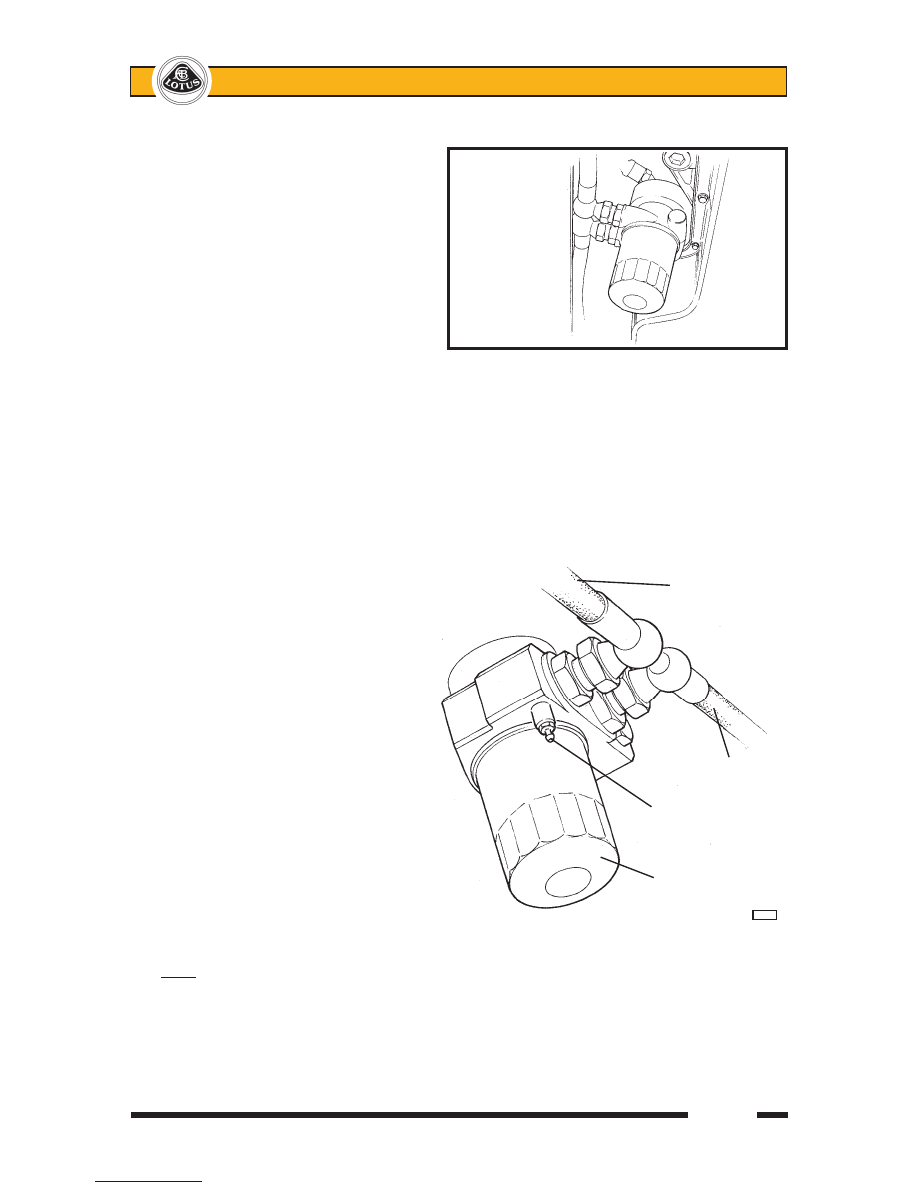Lotus Eleven/Elise/Exige. Manual - part 34

Page 11
Lotus Service Notes
Section EH
Remove the filter by turning in a counterclock-
wise direction, if necessary using an oil filter
wrench, and dispose of safely.
Ensure that only a Lotus specified filter is
fitted, as parts with identical outward appear-
ance can contain different internal features.
Before fitting a new filter, clean the mating
face on the engine, and smear the new seal
on the filter with clean oil. Add a small amount
of clean engine oil into the filter, screw onto
its spigot and tighten BY HAND sufficiently
to make a secure seal, typically 2/3 to 3/4
of a turn after the sealing faces have made
contact.
Overtightening using a filter wrench may damage the canister and/or complicate subsequent removal.
Start the engine and check for oil leaks. Re-check the security of the filter, further tightening by hand if
necessary. Check the oil level (see above) when the engine is fully warm.
Oil Coolers
The foregoing oil change procedure does not disturb the oil quantity contained in the twin oil coolers and
associated pipework, but is considered perfectly satisfactory for routine maintenance operations. In instances
of major engine failure where the oil system may be contaminated with metallic debris, all oil cooler lines should
be thoroughly flushed out and the oil cooler radiators replaced.
If the oil cooler circuit is drained or re-
placed, the following procedure should be
adopted to fill the cooler system before starting
the engine:
1. Attach a tube to the bleed nipple on the
sandwich plate between oil filter and
engine block, and lead into a catch tank.
Open the bleed nipple.
2. Disconnect the outlet hose from the top of
the LH oil cooler, and pour engine oil into
the cooler until oil reaches the bleed nip-
ple (approx. 2.5 litres). Close the bleed
nipple, tightening to 8 Nm.
3. Connect the LH cooler outlet hose and
tighten to 40 Nm.
4. Add a further 0.7 litres of oil into the engine
to accommodate the volume of the return
hose between LH oil cooler and engine.
5. After starting the engine, restrict running to
idle speed for a minimum of 5 minutes, to
allow the oil cooler lines to be purged of
air. Stop engine and re-check oil level.
Note: For cars fitted with an Accusump pressurised oil storage canister, refer to section 'Exige SC'.
Oil cooler
feed hose
Oil cooler
return hose
Sandwich plate
bleed nipple
Oil filter canister
e228
OIL FILTER
(Viewed
from
beneath)
ohs129